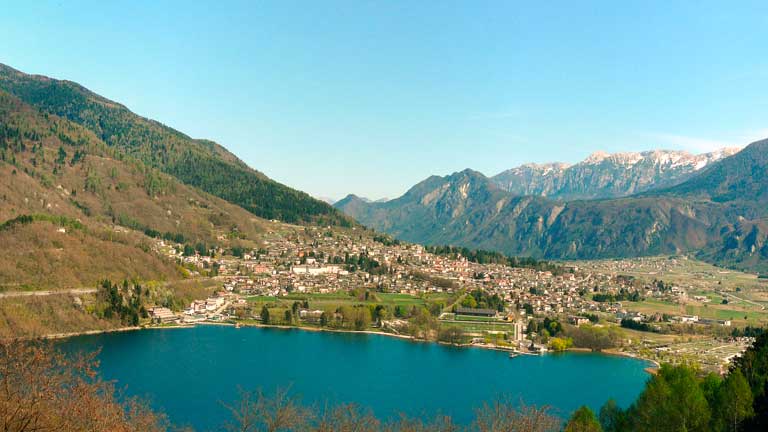


LEVICO TERME
This historical thermal area, a sought-after Hapsburg destination point between the late 19th- and early 20th- century, today has a population of around 8,000. Located higher than the valley floor of Valsugana, it is near to the lake of the same name where the Brenta River is born. To the north is the Lagorai group, while to the south you can find the plateau areas and to the west the Vigolana.
It is an ancient settlement, dating back to the Iron Age: its name may derive from "laevus vicus" thanks to its position to the upper left of the Brenta; the area is full of places with Latin-based names. In the Middle Ages, while politically belonging to the episcopal principality of Trento, from the ecclesiastical point of view it was subject to the Diocese of Feltre until 1786.
The name of Levico is documented from as early as 1184. From the 18th century, the waters springing from Mount Fronte were famed for their therapeutic properties; in 1860 a bathing society was established for thermal treatments.
The most interesting buildings include the parish church built in the late 19th century and the church on the San Biagio hill, dating back to the XI century.
Worth a visit are also the ruins of Castel Selva: dating back to the XII century, it was the summer residence of Cardinal Bernardo Cles. During the Council of Trento, it hosted persons of the calibre of Marcello Corvini (future Pope Marcello II) and Reginald Pole, archbishop of Canterbury.
In the territory of Levico you can also find Austro-Hungarian forts such as Forte Col de le Bene, Forte Tenna, Forte Verle and Forte Vezzena.
Levico also boasts the largest historical park in the autonomous Province of Trento: established in 1898, it is home to 76 species of trees, and 125 bushes for a number of more than 550 plants.
On the border with the council of Vignola Falesina in Compet, on the Panarotta, there is a very interesting mining tunnel area. Of historical importance is the Grotta del Vetriolo all’Acqua Forte, a source of thermal water that characterises the area of Vetriolo Terme and the Grotta dell’Ocra all’Acqua Debole, still in the Vetriolo area.
back